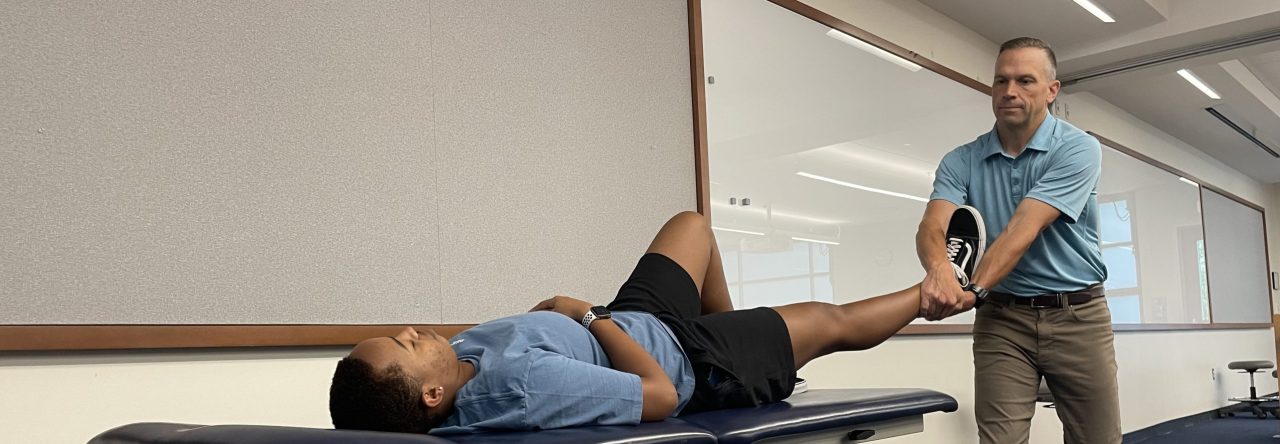Author Names
Young, J. L., Walker, D., Snyder, S., & Daly, K.
Reviewer Name
Emily LaPlante, LAT, ATC, SPT
Reviewer Affiliations
Duke University School of Medicine, Doctor of Physical Therapy Division
Paper Abstract
ABSTRACT
Objectives: Thoracic manipulation is widely used in physical therapy and has been shown to be effective at addressing mechanical neck pain. However, thoracic mobilization may produce
similar effects. The purpose of this systematic review was to evaluate the current literature regarding the effectiveness of thoracic manipulation versus mobilization in patients with
mechanical neck pain.
Methods: ProQuest, NCBI-PubMed, APTA’s Hooked on Evidence, Cochrane Library, CINAHL and SPORTDiscus were searched to identify relevant studies. Fourteen studies meeting the inclusion
criteria were analyzed using the Physiotherapy Evidence Database (PEDro) scale and the GRADE approach.
Results: The literature as assessed by the PEDro scale was fair and the GRADE method showed overall quality ranging from very low to moderate quality. The 14 included studies showed
positive outcomes on cervical pain levels, range of motion, and/or disability with the use of thoracic manipulation or mobilization. There was a paucity of literature directly comparing
thoracic manipulation and mobilization.
Discussion: Current limitations in the body of research, specifically regarding the use of thoracic mobilization, limit the recommendation of its use compared to thoracic manipulation for
patients with mechanical neck pain. There is, however, a significant amount of evidence, although of varied quality, for the short-term benefits of thoracic manipulation in treating
patients with this condition. Further high quality research is necessary to determine which technique is more effective in treating patients with mechanical neck pain.
Keywords: Manipulation, Mechanical neck pain, Mobilization, Systematic review, Thoracic
NIH Risk of Bias Tool:
Quality Assessment of Systematic Reviews and Meta- Analyses
1. Is the review based on a focused question that is adequately formulated and described?
-Yes
2. Were eligibility criteria for included and excluded studies predefined and specified?
-Yes
3. Did the literature search strategy use a comprehensive, systematic approach?
-Yes
4. Were titles, abstracts and full text articles dually and independently reviewed for inclusion and exclusion to minimize bias?
-Yes
5. Were the included studies listed along with important characteristics and results of each study?
-Yes
6. Was publication bias assessed?
-Yes
7. Was heterogeneity assessed?
-Not applicable
Key Finding #1
Research is limited on the comparison of thoracic manipulation and mobilization and its effect on mechanical neck pain.
Key Finding #2
Of the 14 included studies, positive outcomes were demonstrated in neck pain levels and range of motion with the use of thoracic manipulation or mobilization.
Key Finding #3
Neck pain and disability can be decreased in short term with the implementation of thoracic manipulation or mobilization both with and without exercise.
Please provide your summary of the paper
Research is limited on the comparison of thoracic manipulation and mobilization and its effect on mechanical neck pain. Fourteen studies were included in the systematic review that all included mechanical neck pain with an intervention on the thoracic spine, 10 studies being randomized controlled trials with the other four studies including one quasi experimental study, one cohort study, one case series and one secondary analysis of a randomized controlled trial. Only one study compared thoracic manipulation to thoracic mobilization with each group having 30 subjects. The results of the one study demonstrated clinically and statistically significant reductions in disability and pain as well as in perceived recovery. No significant differences were observed between the manipulation and mobilization groups. The studies that used isolated manipulation techniques showed statistically significant improvements in disability at follow ups immediately post intervention, 1 week and up to 6 months duration. While one of the lowest quality studies included in the systematic review, Ko et al., compared thoracic spine mobilization with exercises to exercises alone and found the mobilization and exercise group demonstrated a clinically and statistically significant reduction in neck disability
and pain.
Please provide your clinical interpretation of this paper. Include how this study may impact clinical practice and how the results can be implemented.
Mechanical neck pain can commonly be treated with conservative measures, such as physical therapy. The use of mobilization and manipulation techniques are commonly implemented as a
course of treatment to increase range of motion and decrease pain. However, the studies only included short term effects of thoracic techniques and could further benefit from research that
includes long term follow up. The results of the systematic review can be applied to treatment if it is understood that statistically significant differences have been found with decreasing neck
pain regardless of thoracic mobilization versus manipulation. Future research is still needed to further compare thoracic manipulation to mobilization and the effects on mechanical neck pain.
